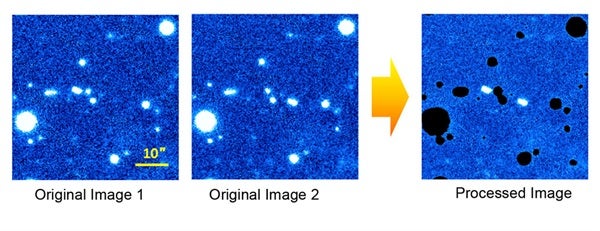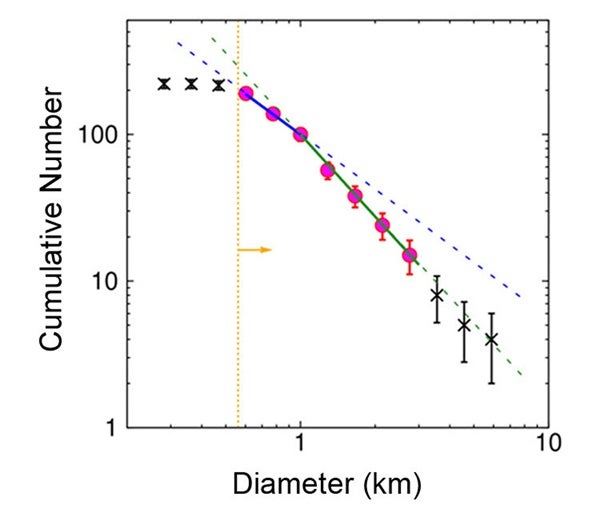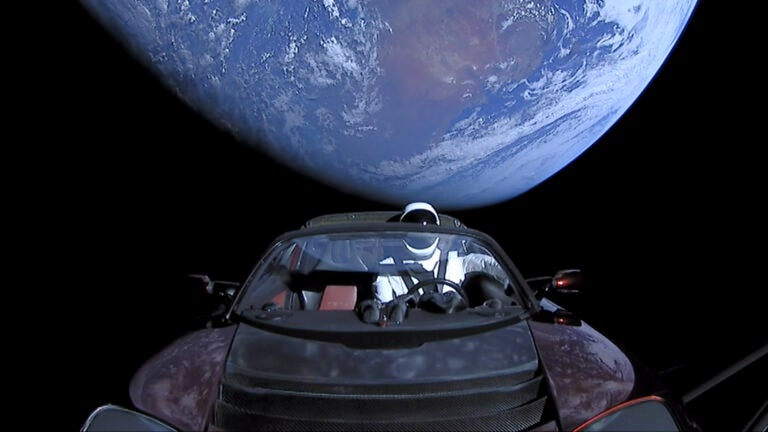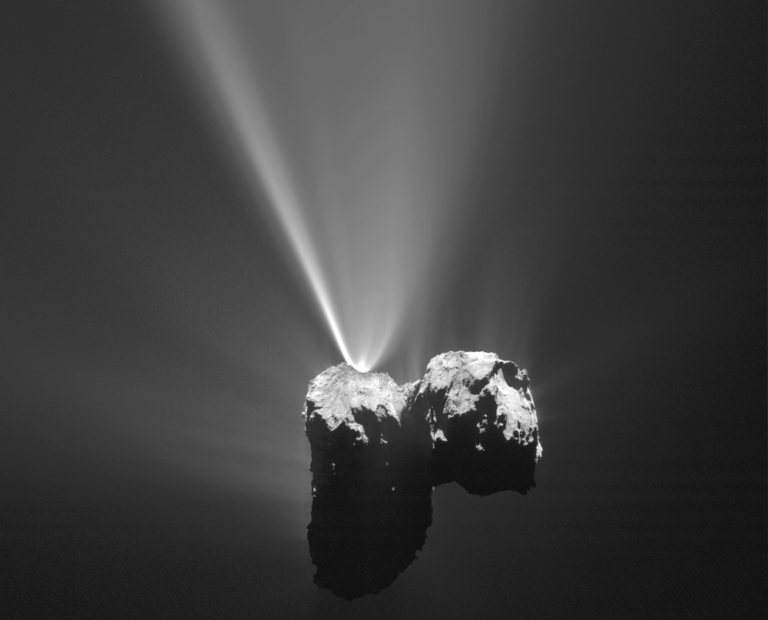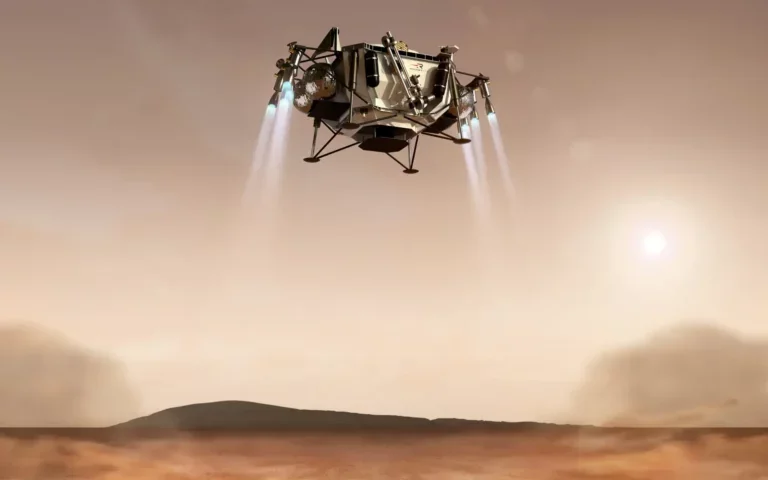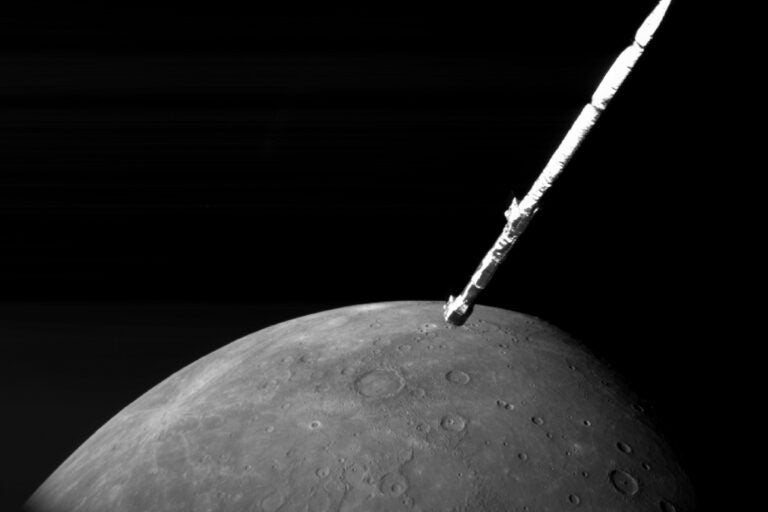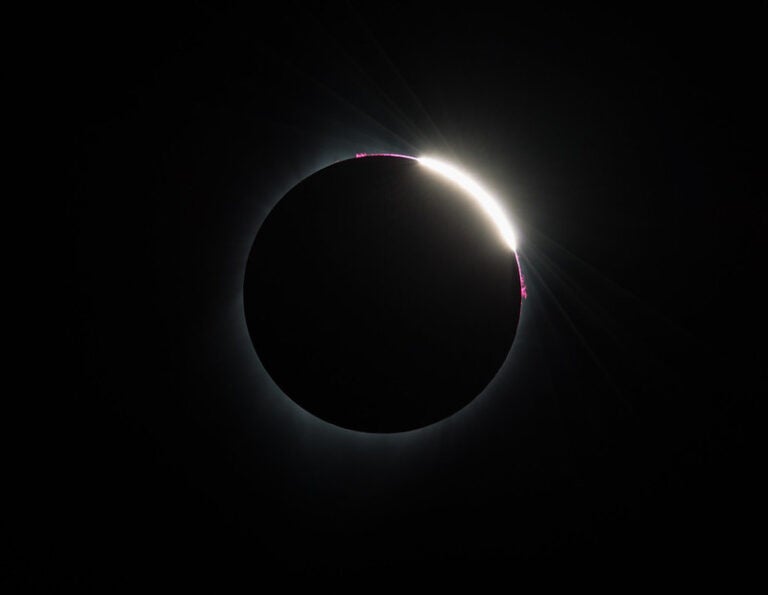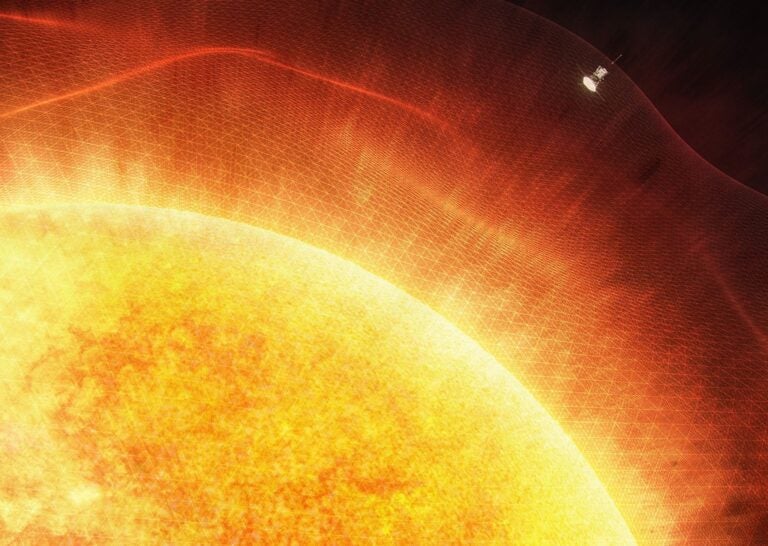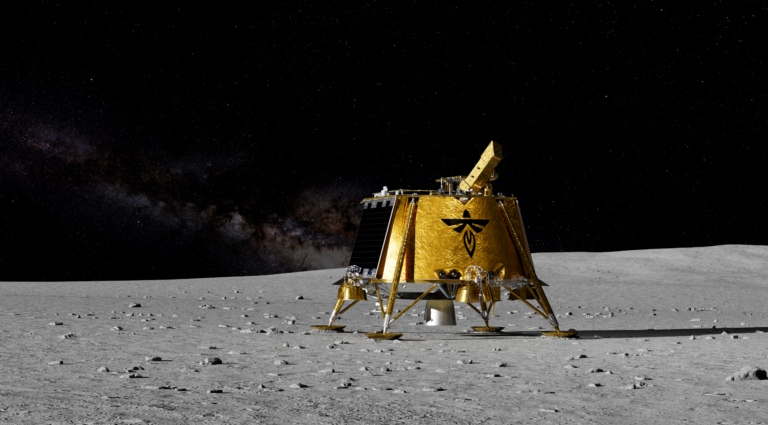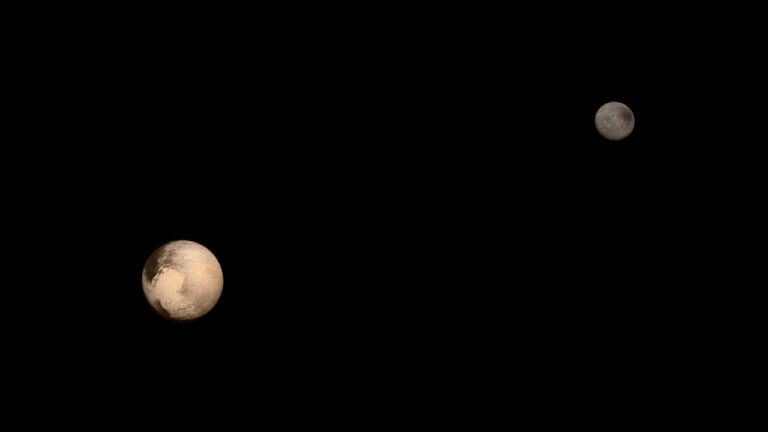Asteroids, small rocky or metallic objects that mostly orbit in the zone between Mars and Jupiter — the main asteroid belt — continuously collide with one another after their formation. A so-called “catastrophic collision,” when objects suddenly hit each other with great force and incur significant damage, alters asteroids, the fragments of which become newly-born asteroids. Collisional evolution refers to changes in the size and number of asteroids as collisions repeat over time. Asteroids of a certain size decrease because larger-bodied objects may fragment after catastrophic collisions. The asteroid’s material strength against impacts is the primary factor controlling the balance between the increase and decrease in the size and number of asteroids through continuous collisions. The strength of asteroids larger than about 325 feet (100 meters) in diameter increases with size because gravity holds such larger objects together in a process called “gravitational binding.” The population distribution of asteroids results from how much their strength against collisions increases in relation to their size. Therefore, measurements of their population distribution indicate properties of asteroids’ strength and provide information necessary for investigating the collisional history of the asteroid belt.
Previous observations of asteroids’ population distribution supply the data scientists need to model their collisional evolution. However, astronomers know very little about the early collisional evolution in the main asteroid belt because newborn Jupiter scattered the orbits of asteroids and sped up their relative velocities so that they were colliding with each other at a much faster rate than at present. How, then, can astronomers learn more about the strength properties of asteroids that collide at such high velocities and are not orbiting in similar, nearly circular orbits along the ecliptic plane — a reference plane based on Earth’s orbit projected in all directions?
The current team of astronomers focused their research on the population distribution of asteroids with highly inclined orbits because their collisional velocities are high and can provide information about their strength properties. No previous observations have measured the population distribution of high-inclination asteroids in the desirable range of several hundred meters to several kilometers. Therefore, the team decided to use Suprime-Cam mounted on the 8.2-meter Subaru Telescope to conduct an optical wide-field observation of small main-belt asteroids with high inclinations. Suprime-Cam’s position at the prime focus combines with Subaru’s large primary mirror to provide a particularly wide field of view, which is ideal for targeting such faint and sparsely populated asteroids. To observe a sufficient number of these objects within a limited amount of time, the team developed a new efficient asteroid detection technique (first image) and decided to survey a sky area at high ecliptic latitudes, where high-inclination asteroids are likely to be located.
The graph image shows the population distribution obtained from the asteroid sample. The slope of the distribution changes sharply when the asteroids are about .6 mile (1km) in diameter — the same pattern that a previous study confirmed in asteroids near the ecliptic plane. A careful comparison of the population distribution of asteroids with diameters ranging from 1,970 feet (600 meters) to 3 miles (5km) with that of asteroids near the ecliptic plane revealed that high-inclination asteroids have a smaller proportion of small to large objects — a shallower population distribution. This finding indicates that high-velocity collisions accelerate the rate of increase in the strength of asteroids according to their size. The results of this study indicate that in the early solar system when Jupiter’s birth triggered collisions of asteroids at higher velocities than now, large asteroids were more resistant to disruption and had longer lifespans than those in typical present-day collisions. The team plans to use Hyper Suprime-Cam to conduct large-scale surveys to further investigate the dynamical/collisional evolution of various small-bodied populations in the solar system.

